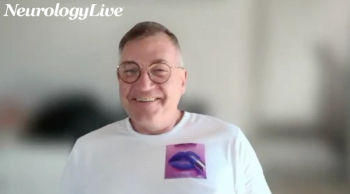
For Adults With Stroke, Telerehabilitation is Similar to In-Clinic Rehab
30 days post-treatment, the mean Fugl-Meyer score change was a significant 8.36 points and 7.86 points for the in-clinic and telerehabilitation groups, respectively.
Steven C. Cramer, MD, MMSc
Telerehabilitation has been shown to have similar efficacy in rehabilitating and improving motor status for patients who’d had a stroke when compared with traditional in-clinic rehabilitation.1
In an 11-site, 124-patient randomized, assessor-blinded, noninferiority trial led by Steven C. Cramer, MD, MMSc, associate director, Institute for Clinical & Translational Science, University of California Irvine School of Medicine, the use of activity-based training produced substantial gains in arm motor function in both the home-based telerehab or traditional in-clinic rehab groups (P = .96).
Cramer, who is also a professor of anatomy and neurobiology, and of physical medicine and rehabilitation, told JAMA Network that “even in the best of circumstances with a rehab therapy session, many of the minutes are often spent not doing rehab out of necessity. History and physical, review the chart, explain things.” He added that even in the best situations, the quality of rehab can be less than spectacular.2
“We reasoned that telehealth could really help patients get large doses of accessible rehab care, in a manner—if it’s gamified and takes advantage of modern computing—in a very efficient way. We can get tabs on them, it’s motivating, and individualized,” Cramer explained.
The trial randomized 124 patients with a mean baseline Fugl-Meyer (FM) motor score of 43 points (standard deviation [SD], 8) to either the telerehab group or the in-clinic rehab group. They both received 36, 70-minute session of arm motor therapy plus stroke education, with equivalent intensity, duration, and frequency of therapy across groups.
After 30 days post-treatment, the mean FM score change from baseline was a gain of 8.36 points (SD, 7.04) and 7.86 points (SD, 6.68) for the in-clinic and telerehab groups, respectively (P <.001 for both). The mean covariate-adjusted FM score change was 0.06 points (95% CI, —2.14 to 2.26) higher for the telerehab group, which was not significantly different. As well, the motor gains remained significant after separate examination of patients who enrolled early (<90 days) or late (≥90 days) after stroke.
When assessed for noninferiority, the margin was 2.47, which fell outside of the 95% confidence interval.
With regard to secondary end points, there were significant increases in Box and Blocks Test scores among the telerehab (9.5 points; P <.001) and the in-clinic (8.8 points; P <.001) groups, though the gains were not significantly different. Likewise, FM motor score gains were not different among those with aphasia (n = 39) and those without (n = 75), with respective gains of 9.46 (SD, 7.06) and 7.40 (SD, 6.65; P = .13).
Although, noninferiority was not demonstrated with Stroke Impact Scale hand motor domain scores, which increased by 23.7 (P <.001) in the telerehab group and by 29.2 (P <.001) in the in-clinic group.
Adherence was high for both groups. The in-clinic group was adherent to 33.6 sessions (93.3%) compared to the telerehab group, which was adherent to 35.4. “People in the telerehab group showed 98.3% compliance with their 36-assigned daily sessions over 6 weeks, which is spectacular,” Cramer said. “Typically, in clinical practice, depending on who you read, compliance is anywhere from 60% to 30%.”
Cramer noted to JAMA that because the compliance was so high in both groups, the results may not ultimately translate to the larger population—he and colleagues wrote that they require further study—but he acknowledged that compliance was still slightly higher in the telerehab group.
A few limitations were identified, most notably that the only outcome measured was arm motor deficits. Poststroke deficits are not limited in this manner, and the investigators acknowledged that leg motor function and language difficulties could also benefit from telerehab. Additionally, no economic analysis was conducted, and the ability to detect a difference between groups in stroke knowledge gains over time was blunted by the high baseline performances on stroke education among both groups.
Cramer and colleagues ultimately concluded that these data suggest that telerehabilitation could potentially increase access to rehabilitation therapy, substantially and on a large scale.
REFERENCES
1. Cramer SC, Dodakian L, Le V, et al. Efficacy of home-based telerehabilitation vs. in-clinic therapy for adults after stroke: A randomized clinical trial. AMA Neurol. Published online June 24, 2019. doi:10.1001/jamaneurol.2019.1604.
2. Benjamin J. Efficacy of Home-Based Telerehabilitation In-Clinic Therapy After Stroke. JAMA Network Podcast. Published June 24, 2019. edhub.ama-assn.org/jn-learning/audio-player/17681124. Accessed July 8, 2019.
Newsletter
Keep your finger on the pulse of neurology—subscribe to NeurologyLive for expert interviews, new data, and breakthrough treatment updates.









































